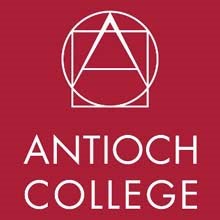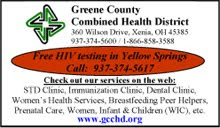 The barricades of the Little Miami Scenic Trail in Clark County went up today. This one at W. Jackson Road looks like an invitation to civil disobedience. I expected something out of Les Miserables.
The barricades of the Little Miami Scenic Trail in Clark County went up today. This one at W. Jackson Road looks like an invitation to civil disobedience. I expected something out of Les Miserables.Related post: Springers affected by Clark County cutbacks








6 comments:
The Clark County Parks department and Sheriff have both announced that they don't have the resources to do any patrols on the path to enforce the closure. I say disobey away. I still don't understand why the bike path is considered a "park" in the first place. Shouldn't it be the responsibility of the local roads departments?
Unsweep multi-use paths (MUP) are unsafe above 10 MPH. The leaves can be slick when wet and hide sticks, twigs and branches.
County engineers often built MUP but operation and maintenance is nearly always with county or local park systems. Little Miami Scenic Trail operates insides a linear park, it's not a regular road.
"Little Miami Scenic Trail operates insides a linear park, it's not a regular road."
Yeah, I know, but the question is, why? It doesn't make sense to me to call it a "park". The current situation is a good example of a problem with that conception—many who use this trail for transportation are being shut out (at least those who choose to obey the rules) because the PARKS are out of money. Another such conflict arose right as the Greene County section was built—the Greene County park offictials wanted a rule that the trail would be closed after dark, like their other "parks". YS officials put their foot down and refused to go along with that. What silliness. Are we serious about bicycles as transportation or not? If not, why did we spend all this money building the trails? Considering them "parks" is incompatible with their purpose.
Road are built higher construction, operation (i.e roads are plowed) and maintenance standards. Generally roads are built for destinations.
Here is the Miami Valley Trail Survey, 2009.
MUP's serve many activities and wide age range:
Walking/Hiking
Jogging/Running
Walking pet
XC skiing/Snowshoeing
Other activity (specify)
Rollerblading
Horseback riding
83% of trail users identified themselves as cyclists.
Why cyclist use trails?
13.3% No Response
01.1% Other
08.1% Fitness Training
15.5% Recreation
58.5% Health and Exercise
03.5% Commuting [ TRANSPORTATION]
Recration is primary use and purpose of MUP. That's why parks operate the LMST.
Yellow Springs has about 25 miles of "bike trails". They are called plain old street which connect people to destinations [work, school, shop or neighbors]. They are well maintained and built for serious transportation.
MUP have limited transportation use and never intended as alternative or supplement to road system.
"Road are built higher construction, operation (i.e roads are plowed) and maintenance standards."
Thank you, Captain Obvious. Yes, roads are built for motor vehicles. Bike paths are built for bikes. Duh.
"Generally roads are built for destinations."
Gee, I was under the impression that the bike paths began and ended somewhere, and passed through places on the way. I guess Springfield, Yellow Springs and Xenia are not "destinations" to you.
"...never intended as alternative...to road system."
You can't be serious. The advocates for bike trails absolutely DO promote them as an alternative to automobile transportation. Our own bike path was vigorously advocated for as such when it was being planned. The resolution of the lawsuit by property owners who claimed the land no longer used for rails should revert to them turned on the argument that the corridors would continue to be used for transportation, and that therefor the easements were still valid.
@Les “Yes, roads are built for motor vehicles. Bike paths are built for bikes. Duh.”
LMST is not a “bike path” (i.e. only bikes) it is a multi use path, 17% of the trail users identified themselves as pedestrians. Roads are NOT build for only motor vehicles. Pedestrian and other non-motorized vehicle drivers are users.
What I meant by higher construction standard, is for example, parts of Mad River and Great Miami trails which runs along the rivers and are regularly flooded after heavy rains. Roads are rarely designed in flood plains.
@ Les “I guess Springfield, Yellow Springs and Xenia are not "destinations" to you.”
Yes LMST connects three cities but where do most people work outside of the Village? Some work in Springfield or Xenia, but I will make a strong guess-estimate that few hundred work in Dayton, Beavercreek or Fairborn. How is LMST a serious transportation alternative for those individuals? Not much, near zilch.
@Les “You can't be serious. The advocates for bike trails absolutely DO promote them as an alternative to automobile transportation. “
Yes, ALL “bike trail advocates” promote multi-use-path like the Little Miami Scenic Trail transportation POTENTIAL. If less than 4% LMST users are commuters, isn’t that a little exaggeration? MUP's have limited transportation function to the general public especially the motor vehicle drivers portion.
There is another reason why county engineer will likely never operate a MUP. State of Ohio constitution prohibits use of fuel tax for anything but road projects. Motorists vehicles can not use the LMST therefore it is a recreational path. Routine accommodation of pedestrian is lacking however knowledgeable cyclists can very capably operate on the existing roads.
Finally, you will be happy to see this headline: “State: County must reopen park, bike trail. Federal grants require 2 of 4 recently-closed parks, bike trails have to be open.”. LMST is a park and but how the lands will stay open to the public in perpetuity is to be seen.
Post a Comment